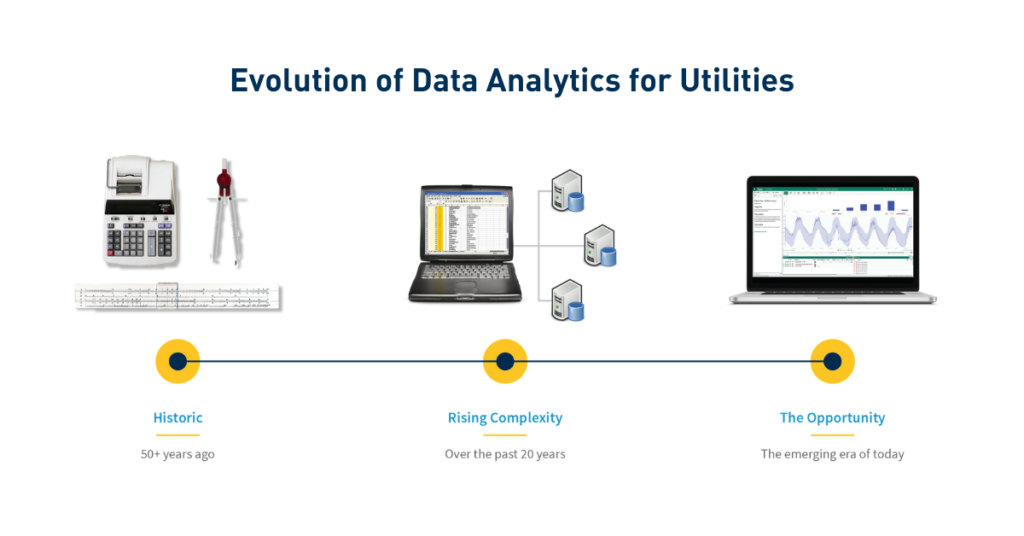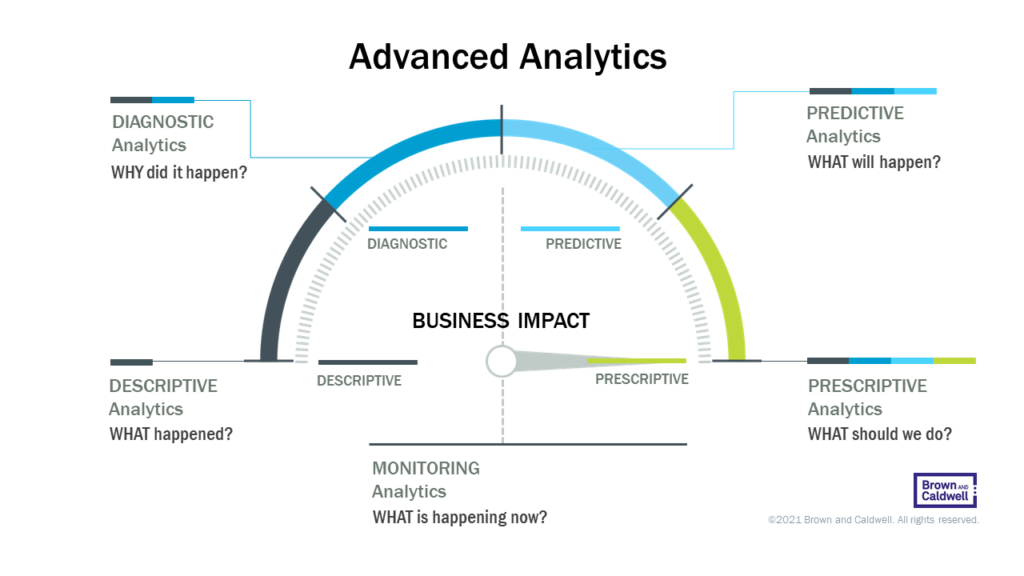Leveraging advanced analytics to gain operational insights is one of today’s leading digital transformation initiatives for water and wastewater utilities.
Having analytics data constantly accessible, including historic and time series data, eliminates what used to require engineering teams to spend hours upon hours evaluating spreadsheets. Used effectively, advanced analytics can predict equipment failure and process outcomes, help develop reliable maintenance schedules, and save time and money across an entire operation.
Yet some common myths regarding advanced analytics persist. Here, we share what we’ve learned through our experience to reveal the truth.
5 Myths About Advanced Analytics
Have you fallen victim to any of the following misconceptions about advanced analytics? Here’s a full breakdown of what’s real and what’s not.
1. “Our data is not organized enough to use for analytics.”
Globally, water and wastewater utilities invest a massive effort to collect data. As just one example, the global SCADA market is expected to grow from $11 billion in 2019 to $15.2 billion by 2024. With all these resources going towards data collection, it’s important to make sure we’re using the data to its full potential to achieve the most benefits.
Advanced analytics is the first step towards making the most of your data. Advanced analytics can be applied to data from previously siloed, separated sources to provide an organized, full-picture view of an entire operation’s assets.
Brown and Caldwell’s advanced analytics solutions are designed to connect to multiple time-series data sources without copying or duplicating data, on premise or in the cloud, and in historians or data lakes. One of the analytics platforms we use to do this is Seeq, which effectively matches disparate data into a common time-step, so that it can be viewed together and used comprehensively in analytics calculations.

2. “Water utilities don’t need advanced analytics like other industries.”
If you are wondering why you would need advanced analytics, we suggest asking, “Why am I collecting all of this data, if I don’t plan to make the most of it?”
Advanced analytics involves examining data to improve understanding, which can help you to make the most of what you have. It helps water and wastewater utilities make the most of their resources and systems by predicting performance and informing decision-making. This often translates to performing calculations on time series data, collected at second, minute, hour, or daily intervals. The results of these calculations are made available to people at all levels of the organization to provide better, more immediate feedback on system status and performance.
“Analytics can be used to discover trends, uncover inefficiencies, explain problems, predict outcomes, and prescribe actions.”
Brown and Caldwell’s National Analytics Engineering Lead Jamie Lefkowitz
The potential business impacts of leveraging analytics are tremendous. Transforming your data from telling you simply what happened, into why it happened, what will happen in the future, and what we should do about it takes operations to the next level. This is the journey from descriptive, to diagnostic, to predictive, to prescriptive analytics, offering insights that lead to decisions that ultimately improve bottom lines.

3. “Advanced analytics do not have a proven return on investment in the water industry.”
Leveraging advanced data analytics technology can provide an immediate and enormous ROI for water and wastewater utilities. The targeted analytics are developed specifically to save money by reducing:
- Energy costs through efficient operations
- Chemical costs through optimized dosing
- Labor costs by automating reporting
- Training costs by expediting informed decision-making
Here are three use cases of applying advanced analytics that result in an immediate ROI:
- Predicting Filter Backwash Cycles: Water plants often have a bank of multiple filtration units, all fully instrumented with sensors that collect detailed minute-by-minute data. Deploying real-time predictive analytics that can project the end of each individual filter’s cycle based on actual current headloss trends. This gives operators an operational target and the tools to measure when they have achieved that target before running a backwash—optimizing energy-intensive backwash cycles and ultimately reducing energy costs.
- Equipment Health Diagnostics: Implementing analytics that track asset health in real time, by counting valve cycles and monitoring key indicators can effectively reduce the chances of equipment failure. Alerting to potential failures and proactively addressing maintenance issues before failures occur saves money on asset repair and replacement, avoids loss of service events, and enables more effective prioritization of maintenance actions.
- Dosing Optimization: Combining sensors and real-time analytics enables operators to implement smarter dosing strategies. Dynamic dosing of chemicals and energy-intensive processes such as UV disinfection, where the dose is adjusted in response to current water quality rather than a predetermined worst-case scenario, reduces cost and energy usage.
4. “Operators will never trust computer analytics.”
Simply put, advanced analytics are developed to make operators’ jobs easier, not take them over. Advanced analytics makes the most of utility staff time.
Operators use experience and human intelligence to make decisions every day. But some of these decisions can be explained with data analytics and reproduced for other operators and management, so they can get up-to-speed faster. Implementing intelligent alerts beyond typical SCADA alarms enables operators to spend their time addressing issues before they become problems instead of responding to failures.
Starting small, we learn what information operators are already using to make decisions and what information they wish they could more easily access, and we use analytics to put this information at their fingertips.
As an example, data can be used to justify capital expenses for equipment to be repaired or replaced before it fails. Operators know what they need, and the insights formed from an advanced analysis of the data can further support their recommendations.
And if there’s concern about advanced analytics being too “tech-forward” and difficult to learn, no need to fret. Seeq is implemented by Analytics Engineers with BC’s partnership and guidance. As a firm completely focused on water and the environment, we set up customized dashboards to reflect the processes and workflows of water and wastewater operations. After this, ongoing training and support is available to teach and develop application knowledge in a progression of steps.
5. “We can’t let computers take over—the risk of failure is too high.”
The most important thing to remember is that by using advanced analytics, humans stay firmly planted in the decision-making role. The only difference is that these decisions are now supported at great lengths by on-hand data.
Additionally, analytics and automation are not synonymous. A great deal of value can be realized from analytics as decision-support tools. Computers using digital transformation, artificial intelligence, machine learning, and big data are offering deeper insight into what’s going on across an operation.
Getting Started with Advanced Analytics
Ready to start gaining rapid insights with advanced analytics? Schedule a demo to see how Brown and Caldwell and Seeq are helping the industry to leverage and transform data into decisions that impact the bottom line.
